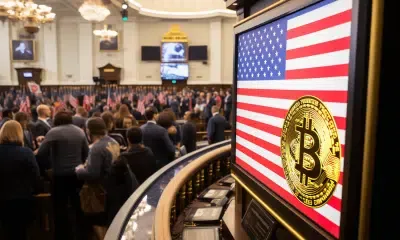
Understanding Stablecoins: Crypto’s Steady Hand and Their Journey to Mainstream Finance
What is a stablecoin, and why is it so important in the crypto world? Stablecoins are special digital currencies; they’re built to hold their value, much like a U.S. dollar, and have become a key piece of the crypto world. They do much more than act as digital IOUs. People use them constantly for trading, accessing decentralized finance (DeFi) services, and increasingly, for sending money globally. With their total value now exceeding $160 billion and heading towards $200 billion, it’s time to really understand how they work, what they’re used for, and why regulators are paying so much attention.
How Stablecoins Stay Stable: Different Methods, Different Dangers
Stablecoins achieve their steadiness in a few different ways, and each method comes with its own set of fans and potential problems:
- Backed by Real Money (e.g., Tether’s USDT, Circle’s USDC, First Digital USD’s FDUSD): The most common type claims to hold one real dollar (or similar safe assets like U.S. Treasury bills) for every digital coin issued. Market giant USDT and its competitor USDC, which often highlights its compliance efforts, handle most trading. FDUSD also gained traction, especially when Binance users moved away from BUSD.
- Can You Trust Them? A big question is always about the reserves: can you be sure the money is really there? Companies like Circle share regular reports on USDC’s backing (mostly cash and U.S. Treasuries). Tether, despite improving its reporting and upping its U.S. T-bill holdings, has often been under a tighter microscope. Ultimately, you’re betting the company can actually give you your money back if you ask for it.
- Backed by Other Crypto (e.g., MakerDAO’s DAI): Then there are coins like MakerDAO’s DAI, which are backed by other cryptocurrencies instead of dollars. These tend to operate more autonomously, using smart contracts. To handle the price swings of the crypto they hold as backing, they require users to lock up much more crypto value than the DAI they create. DAI is a major player in DeFi; people can generate it using various approved crypto assets.
- A Tricky Balance: Everything is visible on the blockchain, which is a plus. However, their stability really depends on the value of those volatile crypto assets and whether systems can quickly sell off collateral if its price drops too fast, to keep the stablecoin at its target value.
- Tied to Commodities (e.g., Paxos Gold’s PAXG, Tether Gold’s XAUT): Some stablecoins, such as Paxos Gold (PAXG) and Tether Gold (XAUT), are linked to physical goods like gold. Each token represents ownership of a small amount of real gold, kept in a secure, audited vault. These let you trade tangible assets digitally, but their value will naturally go up and down with the commodity’s market price.
- Code-Based Experiments (and Some Failures): Algorithmic stablecoins, which try to stay stable using automated code and smart contracts to control supply, have stirred the most debate. We’ve seen different approaches, from seigniorage shares—like TerraUSD/LUNA, which crashed spectacularly in May 2022 because of its design and intense selling pressure—to rebasing tokens such as Ampleforth, and mixed fractional-algorithmic ones like Frax, which has since shifted to rely more on actual backing.
- Walking a Tightrope: These aim to be efficient and independent, which sounds appealing. But disasters like TerraUSD showed just how easily they can lose their link to their target price if people lose faith or the algorithms can’t cope with market chaos. Not surprisingly, regulators are very wary of purely code-based stablecoins.
Who Uses Stablecoins, What For, and Their DeFi Role
Most of the stablecoin market belongs to USDT and USDC. It’s clear they’re incredibly useful in many ways:
- Trading and Keeping Cash Steady: On crypto exchanges, stablecoins are essential. They provide a steady currency for trading against other cryptos and give traders a place to shift their money during wild market swings without cashing out to traditional money. In fact, most crypto trades today use a stablecoin on one side.
- Decentralized Finance (DeFi): The world of DeFi really counts on stablecoins. People use them there for everything from lending and borrowing to earning rewards (often called yield farming) and as security for loans. Because they’re stable, DeFi platforms like Aave and Compound can offer more predictable results and help users manage financial risks.
- Sending Money and Payments: Making international payments quicker and cheaper is a big reason people are turning to stablecoins. This is especially true in places where local money isn’t stable or banking is hard to get. Some experts think stablecoins could soon handle trillions in payments, giving old-school payment systems a run for their money.
- Digital Versions of Real Things (RWAs): Stablecoins are also key for the growing trend of turning real-world items—like property, bonds, or art—into digital tokens on a blockchain. They’re the money used for these transactions, helping to connect traditional finance with the DeFi world.
Governments Take Notice: The Push for Stablecoin Rules
Regulators across the globe are definitely paying attention to how quickly stablecoins have grown. They’re mainly worried about keeping the financial system safe, protecting people who invest, stopping illegal money flows, and ensuring countries maintain control over their own currency.
- United States: In the U.S., lawmakers are working on rules like the Clarity for Payment Stablecoins Act. The goal is federal control, which would mean stablecoin companies must hold secure assets to back their coins 1:1, get regular checks, and make it easy for people to cash out. There’s still talk about whether these companies should be treated like banks.
- European Union: The European Union’s Markets in Crypto-Assets (MiCA) regulation, mostly kicking in from June 2024, sets tough conditions for companies issuing stablecoins (called “asset-referenced tokens” or “e-money tokens”). They’ll need official approval, solid reserves, and to be open about how they work. The biggest stablecoins will be watched directly by the European Banking Authority.
- United Kingdom: The UK is also creating its own rules, calling stablecoins “digital settlement assets.” The Financial Conduct Authority and the Bank of England will both keep an eye on them.
- Singapore: Singapore’s financial authority, MAS, has a system where stablecoins tied to a single currency can choose to be regulated. The focus is on making sure they hold their value, have proper backing, and can be cashed out for what they’re worth.
Across the board, these new rules are pushing for companies to be clear about their reserves—simple statements are frequent, but full, deep audits are what many now want to see—along with strong ways to handle risks and better safeguards for users.
What’s Next for Stablecoins: Central Bank Money, Earnings, and Secrecy
The story of stablecoins is still unfolding, and a few important developments are guiding where they go next:
- Official Digital Money (CBDCs): Many countries, more than 100 actually, are looking into creating their own digital money, called Central Bank Digital Currencies (CBDCs). How these official digital currencies will interact with private stablecoins is a big question. They might end up competing, or they could find their own separate uses, perhaps even working together. CBDCs could provide a super-safe way to settle payments, leaving stablecoins to explore new uses in other areas.
- Stablecoins That Pay You Back: A new type of stablecoin is emerging that actually pays users a return. This income comes from the interest earned on the assets backing them, like U.S. government bonds or other real-world investments. People like them, but they’re tricky from a legal standpoint because they might start to look like investments that fall under securities laws.
- More Private Stablecoins: Since blockchain deals are usually public, some are worried about privacy. New stablecoins are being developed using clever tech like zero-knowledge proofs to give users more secrecy. This could be really important for businesses to feel comfortable using them more widely.
- Better Stability and Openness: We’ll likely see more work on making stablecoins even better at holding their value. This means new ways to back them, possibly mixing different methods or creating smarter algorithms. At the same time, people will want more ways to check, instantly and on the blockchain itself, that the reserves are really there.
Keeping things secure is still a massive worry, both for the companies creating stablecoins (who have to protect reserves, make sure their code is safe, and fight off hackers) and for people using them (who need to keep their digital wallets safe and watch out for scams). When stablecoins lose their link to their target price—like the TerraUSD disaster, or even when big ones like USDC (during the SVB bank problems) and USDT (when there wasn’t enough ready cash) briefly wobbled—it really hits home that there are always risks. It shows how vital it is for these coins to be built well and for companies to be open about how they run things.
Stablecoins: More Than Just Crypto Tools, They’re Changing Finance
Once just a handy tool for crypto traders, stablecoins have grown into a huge, multi-billion dollar market that could genuinely change parts of how money works around the world. They’ve come this far through quick new ideas, facing big hurdles, and now, getting a lot more attention from rule-makers. If stablecoins can build trust between the often-wild crypto markets and everyday finance, their success will hinge on staying stable, being open, and managing all the new rules. These factors will decide what part they play in money’s future. Big discussions are still happening: should they be backed one-to-one or can they hold less? How well do community-run systems like DAOs really work? And what do stablecoins mean for national money policies? These digital currencies keep bringing up some very deep questions.




